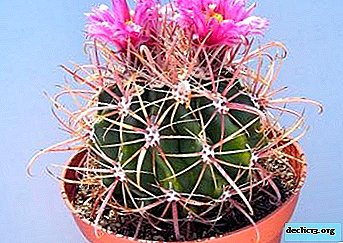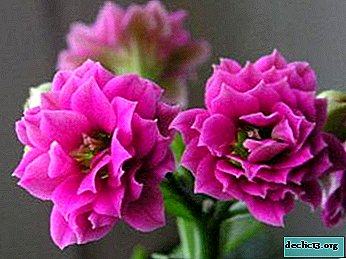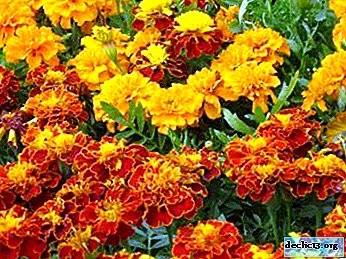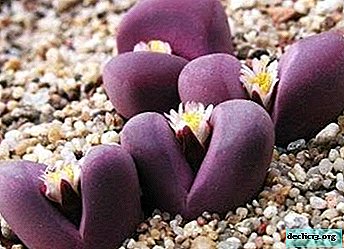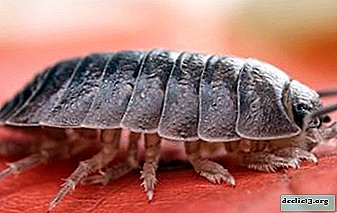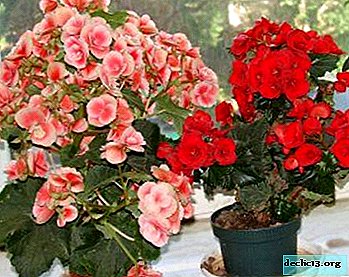Azalea fades - why is this happening and what to do?
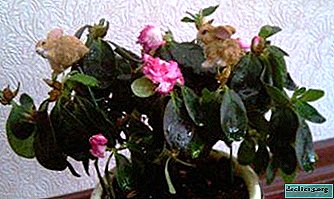
Azalea is one of the most beautiful flowers, delicate and very moody, bewitching any person. Improper care of it, leading to wilting of the bush, causes a lot of trouble and grief.
Why does this happen with indoor flower? What to do when leaves begin to fall off? Next, we will tell you in detail what you need to pay attention to in caring for this whimsical plant.
What is wilting?
Definition
Withering of any plants is a kind of disease, where the loss of turgor dominates (tissue tension). The plant weakens, withers, leaves, flowers, and the possible death of the plant itself occur.
Read more about what ailments are affected by azalea, as well as get acquainted with the methods of treating diseases and pest control here.
Appearance
On a note. Withering of azaleas can be determined by the appearance of leaves, flowers, branches. The color of the leaves varies depending on the cause of the wilting.Most often, the tips and edges of the leaves become dark brown. Sometimes the leaves can become completely brown, yellow or with red spots. When wilted, the flowers wrinkle, dry out, fall off. The branches of azaleas lose their elasticity.
What is the danger to the bushes?
Without taking measures when the rhododendrons wither, the flower bushes will begin to dry out at best (they can still be saved), in the worst case they will die.
Why does this happen to a potted plant?
 There are many factors by which azalea withers and dries. Here are the main ones:
There are many factors by which azalea withers and dries. Here are the main ones:
- watering is carried out incorrectly;
- little lighting;
- insufficient nutrients;
- transplantation during flowering;
- fertilizer deficiency;
- the root system is affected by the disease;
- chlorosis (the presence of a large amount of calcium in the soil);
- stressful periods for a flower;
- the presence of pests.
Step-by-step instructions on what to do when withering the various parts of the rhododendron
Flowers
- When the first signs of wilting of the plant appear, we carefully examine the buds and ovaries of flowers. We determine why the flowers wilted, because then it will be clear what to do next.
- After that, we begin to revive the azalea. We remove the fallen flowers from the pot, check the importance of the earth (it depends on the state of the soil: either start watering with the obligatory application of fertilizing “Kemira”, “Ferovit” or dry the earthball).
Sometimes direct sunlight falls on a flower. Take it to the back of the room (if it is on the windowsill, especially on the south side). In low light we have in the brightest place. The buds can also dry out for this reason - during the period when the buds appeared, the pot was turned the other side to the light. This is not recommended.
Leaves
When the azalea begins to fade, the leaves are the first to signal. A careful examination, determination of the causes and subsequent actions will help save the plant.
The main reason for the drying of leaves is dryness and heat in the room, especially in summer. Reduce the temperature:
- we have a flower on the north side;
- lining pots with ice;
- put ice on pallets;
- spray the leaves (not flowers);
- install a humidifier, water containers.
Some causes of drying can be identified by the color of the leaves:
- If yellowing leaves:
 The appearance of a spider mite (if the azalea does not bloom, spray it abundantly and often. Or use a soap solution).
The appearance of a spider mite (if the azalea does not bloom, spray it abundantly and often. Or use a soap solution).- Chlorosis develops - the calcium content is increased (when watering, acidify the water).
- Alkalization of the earth in a pot due to hard watering. Watering is carried out with soft water - boiled, distilled, settled.
- Red spots on the leaves - fungal disease septoria.
- Blacken leaves - defeat by the Rhododendron tick. In both cases we use “Diazinon”.
What if the bush drops its leaves?
Falling leaves is primarily a response of the azalea to non-compliance: proper watering, temperature, timely nutrition of the plant.
There is one excellent remedy for watering when feeding a plant from the effects of wilting or stress, which often cause twisting and falling of leaves - HB-101 (1-2 drops per watering can), a safe growth stimulator. At the heart are extracts from plants: plantain, pine, cypress, Himalayan cedar. Its use increases resistance to climate change. Sold in the form of granules or liquids.
Influence on wilting and insufficient humidity in the room, and improper selection of soil composition for rhododendron. At the first signs of wilting and falling of leaves, it is necessary to determine the cause and try to eliminate it.
Water only with soft water, alternate watering: through the pan, from above and by dipping the pot into the water. Consider seasonality when choosing a temperature regime. Avoid dryness and extreme heat. Timely use drugs against pests.
Preventive measures
Consider the main issues of prevention in order to reduce and eliminate wilting.
Lighting Choice
Reference. It is important to remember that direct sunlight is detrimental to azaleas, so putting flower pots on the south side is not recommended.Preferably on the west, east and north sides. If all the windows are on the south side, we place them at a distance from the windows - on shelves, bedside tables and the like. In winter, you can apply additional lighting - fluorescent (cold) light lamps, phytolamps.
Humidity
Rhododendrons came to us from countries (China, Japan) with high humidity, therefore in rooms where flowers are grown there must be an appropriate humidity of at least 70-80%. Therefore, for the purpose of prevention, it is advisable to use air humidifiers, put ice in pallets, close heating batteries near flowers, put containers with water.
Air temperature regulation
So that the leaves and flowers do not fall, the branches of the plant do not dry, it is necessary to maintain the desired temperature. Azalea blooms amicably (in winter) at a temperature of 12-16 heat, but should not fall below 5 degrees (otherwise the plant will die), in summer it is allowed up to 20-24 degrees, but with intensive spraying.
Pest control
Daily inspection of leaves, buds, stems for the detection of insects and determine their species. When it appears, treatment with chemical preparations (insecticides) or folk remedies (for example, soap solution, tobacco dust, etc.) is needed.
Proper watering
Watering is carried out with very soft water. (boiled, settled, distilled, rain, thawed). During irrigation, avoid overmoistening the soil, although watering should be plentiful. In the summer, it is advisable to do the procedures with standing water, placing the flower pot in the water, keeping there for 3-4 hours, and then letting it settle, put it in a pan.
Such procedures are done once a month. Watering is carried out with very soft water (boiled, settled, distilled, rain, thawed). If the water often stagnates, you need to change the drainage in the tank.
Top dressing
It is necessary once a month, from February to March, to add sulfates: potassium, ammonium and ammonium nitrate. Superphosphate is desirable to increase the number of buds. To maintain the desired acidity, add citric acid to the water for irrigation (two weeks time), 1 teaspoon of acid per 2 liters.
Attention! Watering through the pan alternate with watering from above.Why? The earth in the pot, saturated with moisture from the pallet, pushes the air out, and the plant "suffocates", the leaves turn yellow, wither and fall off.
Further care
 One of the important conditions for flower care is a transplant. Need to remember that in winter, you can’t transplant, you must wait until the flowering is over and the shoots will begin to grow on the plant. It is important to choose the right soil for transshipment. Purchased, special or prepared independently - coniferous land, red peat, sand. Every year young plants are transplanted, while adults - once every three years.
One of the important conditions for flower care is a transplant. Need to remember that in winter, you can’t transplant, you must wait until the flowering is over and the shoots will begin to grow on the plant. It is important to choose the right soil for transshipment. Purchased, special or prepared independently - coniferous land, red peat, sand. Every year young plants are transplanted, while adults - once every three years.
When caring for bushes, it is important to trim. With periodic pruning and shaping, the bushes in the next period become more magnificent, and the flowers are larger.
So that the plant develops better, flourishes luxuriantly and beautifully in the next season, for the summer it can be dug in the garden. Shaded areas are best suited, without direct sunlight. You can keep rhododendrons in the garden before the onset of cold weather.
Useful video
From the video you will find out why azalea withers and how to avoid this:
Conclusion
Subject to the rules of care specified in the article, azalea will delight you with beautiful and noble colors, a delicate, subtle smell and self-confidence.

 The appearance of a spider mite (if the azalea does not bloom, spray it abundantly and often. Or use a soap solution).
The appearance of a spider mite (if the azalea does not bloom, spray it abundantly and often. Or use a soap solution).

